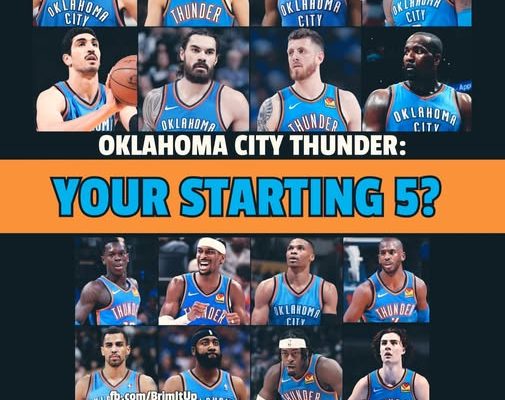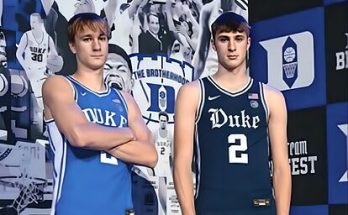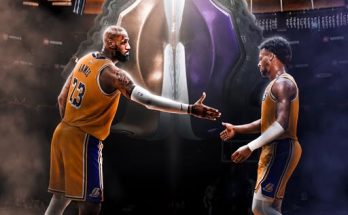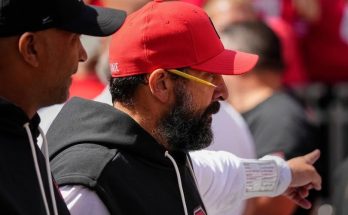The Oklahoma City Thunder have cultivated a fascinating blend of talent, leadership, and potential throughout their franchise history, embodying a unique balance between past legends, present stars, and future hopes. Constructing an ideal Thunder lineup demands careful consideration of their all-time greatest players, the roles they played, and how these talents complement each other on the court. This lineup, featuring iconic names like Shai Gilgeous-Alexander, Russell Westbrook, Chris Paul, James Harden, Kevin Durant, and more, showcases a harmonious balance of scoring, defense, leadership, and versatility. By carefully examining each position and player, we gain a deeper understanding of how their collective skills create a team that represents the franchise’s history and future potential.
At the point guard position, the Thunder’s history shines bright with players who have significantly influenced the team’s trajectory. Shai Gilgeous-Alexander emerges as the prime candidate for the modern era, renowned for his exceptional talent, versatility, and steady growth. Shai’s skill set is built on a foundation of excellent ball handling, high basketball IQ, and an ability to create scoring opportunities both for himself and his teammates. His blend of size, length, and smoothness makes him a matchup nightmare, capable of guarding multiple positions and initiating offense in various ways. His potential is immense, and as the current face of the franchise, he embodies the future direction of the Thunder’s offense. Shai’s ability to score in isolation, run pick-and-rolls, and shoot from deep with accuracy gives him a complete offensive package, while his improving defensive instincts add another layer of value to his game.
Complementing Shai’s youthful brilliance, the Thunder’s history includes two other extraordinary point guards: Russell Westbrook and Chris Paul. Russell Westbrook’s explosive athleticism and relentless energy have defined the franchise’s most exciting era. Known for his triple-double prowess and aggressive attacking style, Westbrook brought unparalleled intensity and playmaking to Oklahoma City. His fearlessness in driving to the basket, combined with an innate ability to create chaos on defense, made him one of the most electrifying players in the league. His value is not just in his raw athleticism but also in his leadership and competitive fire. Westbrook’s presence on the team ensured that the Thunder were always a threat in transition and could rely on his clutch performances in high-pressure situations.
Chris Paul adds a contrasting but equally vital element to the point guard role: veteran leadership and precision playmaking. Known as one of the greatest floor generals in NBA history, Paul’s basketball IQ, court vision, and clutch decision-making elevate every team he joins. While his style is less explosive than Westbrook’s, it is equally effective in controlling tempo, setting up teammates, and minimizing mistakes. Paul’s steady hand and ability to run complex offenses make him an invaluable mentor and leader, especially for younger players like Shai. His defensive tenacity, communication, and experience in deep playoff runs bring invaluable intangibles that transcend the stat sheet.
Together, these four players — Shai Gilgeous-Alexander, Russell Westbrook, Chris Paul, and Dennis Schröder — form a dynamic and versatile point guard rotation. Dennis Schröder, while not as celebrated as the others, offers valuable speed, scoring off the bench, and playmaking ability, rounding out this position with a reliable veteran option.
The shooting guard position also boasts a fascinating blend of talents representing different facets of the Thunder’s evolving identity. James Harden, during his time with the franchise, brought an elite scoring versatility that shifted the team’s offensive capabilities. Harden’s ability to shoot from deep, draw fouls, and create opportunities both for himself and others made him one of the most potent offensive weapons in the league. His craftiness with the ball and ability to break down defenses complements Shai’s more direct attacking style, creating an offense with multiple dimensions. Harden’s confidence and ability to take over games in clutch moments make him an ideal partner in any lineup.
Defensively, Lu Dort is a cornerstone of intensity and toughness. Known for his lockdown perimeter defense, Dort embodies the grit and tenacity that teams covet in a wing defender. His ability to guard the opposing team’s best scorers, disrupt passing lanes, and provide timely energy plays makes him a perfect defensive counterbalance to Harden’s offensive prowess. Dort’s hustle and consistent effort epitomize the team-first mentality the Thunder prize.
Adding further versatility to the shooting guard spot is Jalen Williams, an emerging star whose all-around game is blossoming. Williams’ ability to shoot, pass, and defend multiple positions grants the lineup flexibility and depth. His rapid development shows promise for the future, with a skill set that includes three-point shooting, slashing to the rim, and contributing defensively. The combination of Harden’s scoring, Dort’s defense, and Williams’ emerging all-around game creates a multifaceted and balanced wing position.
Josh Giddey also deserves mention as a player who, while primarily a point guard, has often slotted into shooting guard roles due to his playmaking ability and size. His vision and passing add another layer to the Thunder’s perimeter game, making the backcourt rotation diverse and difficult to defend.
At small forward, the Thunder have been fortunate to count some of the NBA’s best scorers and defenders, making this position rich with talent. Kevin Durant, arguably the greatest Thunder player of all time, redefined the small forward position with his scoring prowess. Durant’s combination of size, shooting, and ball-handling is rare, allowing him to score at all three levels with deadly efficiency. His silky smooth jump shot, ability to create shots off the dribble, and defensive potential make him an all-time great. Durant’s offensive versatility makes him a constant threat, stretching defenses and forcing double teams that open opportunities for teammates. His impact on the franchise’s identity is monumental, having led the Thunder to multiple deep playoff runs and an NBA Finals appearance.
Paul George brings a complementary skill set that emphasizes defense and all-around play. Known for his lockdown perimeter defense and ability to guard multiple positions, George adds a level of toughness and athleticism on the wing that few players can match. Offensively, he is a reliable scorer capable of knocking down threes, driving to the basket, and creating his own shot. His presence on both ends of the floor balances out Durant’s offensive dominance. George’s experience and willingness to take on defensive assignments make him an ideal partner on the wing.
Jeff Green adds valuable versatility to the small forward position, offering experience, scoring, and the ability to play multiple roles. Green’s adaptability allows coaches to deploy him in various lineups, whether stretching the floor with his shooting or providing reliable scoring and veteran savvy. His calm demeanor and basketball IQ make him a useful player in high-pressure situations and a mentor for younger teammates.
Together, this small forward group — Kevin Durant, Paul George, Jeff Green, and Jalen Williams (who can play multiple wing positions) — forms a combination of elite scoring, lockdown defense, and versatile role playing that enhances the Thunder’s frontcourt options.
Power forward has seen an evolution in the Thunder’s roster, blending leadership, defense, and future potential. Nick Collison, a fan favorite and franchise icon, symbolizes leadership and toughness. Known affectionately as the “Captain,” Collison was a defensive anchor and reliable scorer during his tenure. His experience, grit, and ability to provide stability on and off the court make him an essential figure in Thunder history. Collison’s rebounding and defensive awareness helped anchor a team during its early years of success, and his leadership qualities would be invaluable in any ideal lineup.
Chet Holmgren, the highly touted young prospect, represents the Thunder’s bright future at power forward. With his unique combination of length, shooting, shot-blocking, and mobility, Holmgren projects to be a game-changing player. Although his NBA career is just beginning, his upside is immense. His ability to stretch the floor with his shooting, protect the rim defensively, and move fluidly in transition offers the Thunder a versatile piece around which to build their future. Holmgren’s presence adds a new dimension to the lineup, blending youth and potential with veteran leadership.
Serge Ibaka rounds out this position with his proven shot-blocking ability and mid-range scoring. Ibaka’s defensive prowess and experience in playoff battles provide a steadying influence. His ability to space the floor with outside shooting and protect the rim makes him a valuable asset in modern basketball lineups. Ibaka’s contributions on both ends of the floor make him a reliable veteran presence in this ideal lineup.
Carmelo Anthony also deserves mention here for his stint with the Thunder, where he offered scoring and veteran experience. Though primarily known as a small forward or scoring forward, Melo’s ability to stretch the floor and provide clutch scoring makes him a useful part of the Thunder’s power forward rotation historically.
At the center position, the Thunder’s lineup is anchored by toughness, rebounding, and defensive presence. Steven Adams stands out as one of the franchise’s most beloved centers. Known for his physicality, screen setting, and relentless rebounding, Adams embodied the blue-collar spirit of Oklahoma City basketball. His ability to set hard screens, finish around the rim, and protect the paint made him a key piece during the Thunder’s playoff runs. Adams’ toughness and personality make him a natural fit as a starting center in this ideal lineup.
Kendrick Perkins, another physical presence, provided a formidable defensive force during the Thunder’s prime years. Perkins’ toughness in the paint, rim protection, and ability to guard the league’s best big men helped define the team’s defensive identity. Though not a prolific scorer, his value was in his defensive role and intimidation factor.
Enes Kanter adds scoring punch off the bench at center. Known for his ability to score in the post, offensive rebounding, and energy, Kanter provided a spark for the Thunder when coming off the bench. His offensive skills complement the more defensive-minded big men in the lineup, giving the team balanced options at the five.
Isaiah Hartenstein, a modern NBA big man with skill and mobility, also deserves mention for his ability to stretch the floor and defend multiple positions, further expanding the Thunder’s center options.
Collectively, these players at center — Steven Adams, Kendrick Perkins, Enes Kanter, and Isaiah Hartenstein — offer a blend of toughness, rebounding, defense, and scoring that rounds out the team’s frontcourt.
When examining this ideal Oklahoma City Thunder lineup as a whole, what stands out is the franchise’s ability to blend scoring, defense, and leadership across all positions. From Shai Gilgeous-Alexander’s emerging star power to the veteran guidance of Chris Paul and Russell Westbrook, the point guard spot is filled with talent that balances youthful potential and seasoned experience. On the wings, scoring threats like James Harden and Kevin Durant are paired with defensive stalwarts such as Lu Dort and Paul George, ensuring the team can both put up points and shut down opposing scorers. The power forward and center positions reflect the franchise’s dual commitment to honoring its past and building for the future, mixing the leadership of Nick Collison and Steven Adams with the potential of Chet Holmgren and versatility of Serge Ibaka.
This lineup also captures the essence of Oklahoma City Thunder basketball: gritty, energetic, and full of promise. It reflects a franchise that has experienced incredible highs with superstars like Durant, Westbrook, and Harden, while simultaneously cultivating young stars like Shai and Holmgren who will carry the torch into the future. The blend of dynamic scoring, lockdown defense, and unselfish leadership makes this team not only exciting on paper but also a representation of the core values that define the Thunder’s identity.
In addition to the individual talents, the ideal Thunder lineup offers significant flexibility in coaching strategies. With multiple playmakers and scorers on the floor, the team can thrive in both fast-paced transition offense and structured half-court sets. The defensive versatility offered by players like Lu Dort, Paul George, and Steven Adams allows for varied defensive schemes, including switching, zone coverage, and aggressive help defense. This adaptability is crucial in today’s NBA, where teams must adjust rapidly to different styles and opponents.
Furthermore, the presence of veteran leaders like Chris Paul, Nick Collison, and Serge Ibaka ensures that younger players benefit from guidance and mentorship. This leadership dynamic fosters a culture of accountability and professionalism, vital for sustained success. The chemistry that such a lineup could develop, built on mutual respect and complementary skill sets, bodes well for both regular-season dominance and playoff resilience.
Looking forward, the Thunder’s ideal lineup is not static but dynamic, poised to evolve as young talents mature and veterans transition roles. Shai Gilgeous-Alexander’s development will likely push him into an even more commanding role, while players like Jalen Williams and Chet Holmgren grow into consistent contributors. The infusion of experience and leadership from veterans ensures the team remains grounded and focused, preventing potential growing pains that young teams often face.
In conclusion, the ideal Oklahoma City Thunder lineup is a thoughtfully crafted mix of exceptional talent, complementary skills, and a deep respect for franchise history. It features Shai Gilgeous-Alexander’s extraordinary talent and potential at point guard, supported by the explosive playmaking of Russell Westbrook and the veteran savvy of Chris Paul. James Harden’s scoring versatility, Lu Dort’s defensive intensity, and Jalen Williams’ rising versatility shape the shooting guard spot. At small forward, Kevin Durant’s scoring brilliance, Paul George’s defense, and Jeff Green’s adaptability provide balance and depth. Power forward blends the leadership and defense of Nick Collison with the potential of Chet Holmgren and the shot-blocking scoring of Serge Ibaka. Finally, the center position is anchored by Steven Adams’ toughness, Kendrick Perkins’ defensive presence, and Enes Kanter’s scoring off the bench.
This lineup not only embodies the Thunder’s rich history but also points toward a promising future filled with hope, resilience, and championship aspirations. It is a team that can excite fans, challenge opponents, and serve as a blueprint for building a competitive franchise in the modern NBA era. The Oklahoma City Thunder’s ideal lineup, thus, is much more than a collection of great players — it is a reflection of a franchise’s identity, culture, and unyielding pursuit of excellence.



